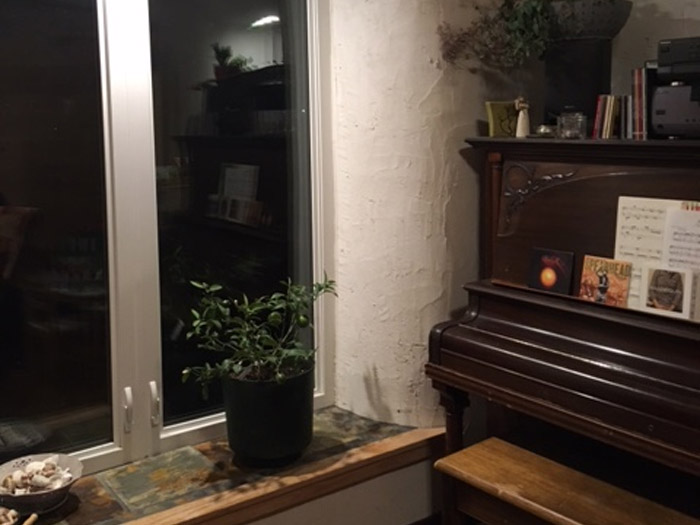Rethinking Lifestyle
The Benefit of Alternatives

In 2003, I was working at Asessippi ski hill when a co-worker mentioned that a friend of his was planning to build a straw bale house. Amazed at the idea, I asked whether that was really possible. Until that moment, I didn’t believe that houses could be any different than the wood, plastic & vinyl boxes that I knew so well.
Straw bale houses were invented in Nebraska in the 1800’s. Out on the plains where trees were scarce, homesteaders used the new technology of mechanical balers and plentiful grasses to build their shelters. It was a common sense solution to a challenging problem – an approach that emerged from necessity. Today however, the primary driver of the housing market is no longer material necessity, but economic gain. Houses are designed and constructed to maximize resale value (often despite the owner’s preferences). This means that a house built today will be made from declining or precious resources because the economy offers them cheaply. Worse, it will be built with materials that have no other destination than the landfill after their lifespan is up, because landfills continue to be opened up to accept it. Vinyl siding is cheap because the government freely gives our once-in-100 million-year oil reserves to companies that are very willing to sell it as fast as they can. It’s also disposable, because I can throw 2000 pounds of it into the soil for a $40 tipping fee.
As with many times in history, common sense is obscured today by economic illusions. Vinyl is cheap. Wood is cheap. Concrete is cheap. Put them together into a house, and you can sell it for a boatload of profit. That is economic truth. But the reality of common sense is very different. Vinyl never goes away. Wood must be replanted and takes time to grow back. Cement factories dump vast quantities of waste into the air and water. Think for a moment what we would be digging up in our gardens today if our great-grandparents had settled this land with Styrofoam insulation and plastic vapour barriers. That’s right – Styrofoam insulation and plastic vapour barriers.
A straw bale house is one possible alternative. It provides exceptionally well-insulated, quality living space. Bale houses require no vapour barrier and can be built with minimal cement. And when their time comes to make room for new construction, they will disappear back into the earth like the houses that preceded them. They are an example of common sense in the face of economic falsehoods.
When the idea of straw bale construction was first suggested to me, it grabbed my attention. But what appealed to me was not only the concept of a straw bale house – it was permission to think of something new, and to be allowed to try it. I think that living together as a society, we’ve all experienced the frustrations of having the seed of an idea, only to be told, “it won’t work” or “why do that?”. Of course there are some ideas that won’t work. But every great innovation, every positive reform, and every epiphany has come from some courageous person saying, “Maybe so – but let me try”.




